School Year of Core Vocabulary Words: AAC Resources for Month 9 (April) by Michaela Sullivan, Alisa Lego, & Beth Lytle
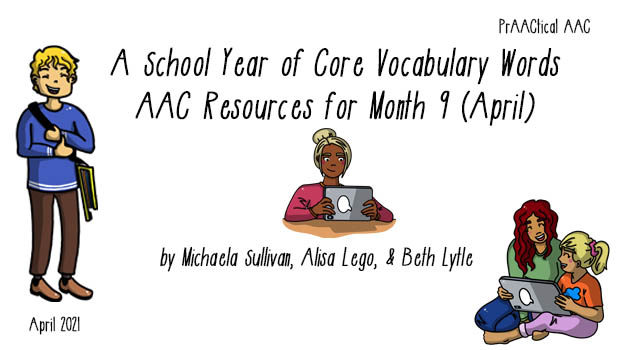
Before we turn the page on the calendar, here’s the April post in the School Year of Core Vocabulary Words Series by guest authors Michaela Sullivan, Alisa Lego, and Beth Lytle. This series focuses on a selected set of words to highlight for the month along with a suggested order in which to teach them. Therapists and teachers will appreciate the Activity Packets, containing suggestions for highlighting these words in a variety of activities. Their Data Collection Forms and tips on using shared reading in our AAC teaching are appropriate for AAC learners of various ages.
If you are new to this series, you may want to review the introduction that our series authors created before delving into this month’s target words. You can see series overview here. You can also review the first 8 months of the School Year of Core Vocabulary Words using the links at the bottom of this post.
A SCHOOL YEAR OF CORE VOCABULARY WORDS – APRIL
To the parents, teachers, Speech-Language Pathologists, Paraprofessionals, friends, and other curious professionals or communicators – welcome back to the monthly School Year of Core Words- April 2021 Edition.
Spring has sprung! We are now kicking off month nine of the School Year of Core curriculum and we hope you have seen your students’ language expand over these last few months. The last nine months of working on this project have expanded the way that we use and view core language in our everyday life, and we hope it has done the same for you!
Many of the April Level 1 and Level 2 words are action words such as kick, slide, and climb. This is a great time to focus on the sensory-motor aspect of teaching and supporting these core words. Now that the snow has melted and the weather gets a little warmer, we hope you have fun using these words outside!
We are thankful for the amazing Core Contributors who have worked tirelessly to create the activity sheets and resources in the postings. We are continuing to work in teams to create resources. We have learned that working together brings diverse and rich ideas that we want to impart on all of you and your incredible students.
Our Featured Core Contributors for the Month of April include:
- Nicole Natale
- Carolann Cormier
- Edna-Jo Piccirillo
- Abbie Duarte
- Nico Lu
- Amy Burt
- Mary Hamilton
- Moira Ikeda
- Wes Heidenreich
- Sophie Goodwin
- Liz Cambra
- Andriana Nikolau
- Jessica Oseguera
- Jordan Stuhltrager
- Kelsey Robin
- Meaghan Rose Baron
- Beth Kenney
Enjoy Month 9 of the School Year of Core Words!
THE WORDS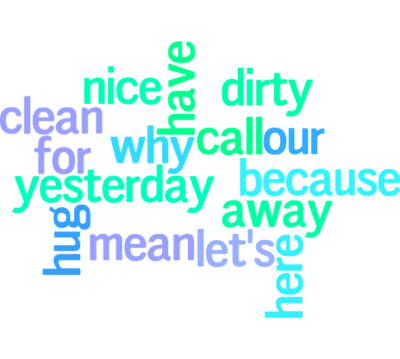
Level 1 words for April: our, call, let’s, here, nice, mean, have, for, away, hug, clean, dirty, because, yesterday, why
The suggested sequence for implementation is listed below:
- Week 1: our, call, let’s, here
- Week 2: nice, mean, have, for
- Week 3: away, hug, clean, dirty
- Week 4: because, yesterday, why
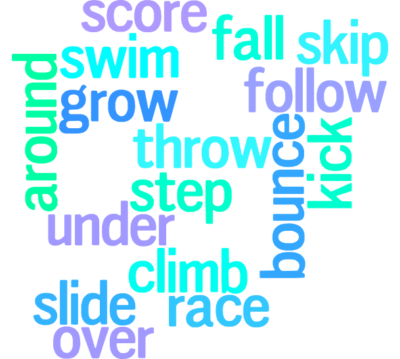 Level 2 words for April: grow, climb, slide, skip, swim, score, race, kick, follow, around, fall, over, under, throw, bounce, step
Level 2 words for April: grow, climb, slide, skip, swim, score, race, kick, follow, around, fall, over, under, throw, bounce, step
The suggested order for these words is listed below:
- Week 1: grow, climb, slide, skip
- Week 2: swim, score, race, kick
- Week 3: follow, around, fall, over
- Week 4: under, throw, bounce, step
THE SYMBOLS
You can download grids with the symbols for this month’s words from the lists below. These handy tools can help us remember what words to focus on and be useful in our intervention and instruction.
Level 1 Words
- Avaz
- CoughDrop
- LAMP Words for Life
- Wordpower 60 Basic
- Unity 45 Sequenced
- Unity 60 Sequenced
- Unity 84 Sequenced
- Blank Grid (add your own symbols)
Level 2 Words
- Avaz
- CoughDrop
- LAMP Words for Life
- Wordpower 60 Basic
- Unity 45 Sequenced
- Unity 60 Sequenced
- Unity 84 Sequenced
- Blank Grid (add your own symbols)
THE ACTIVITIES
These sets of Activity Packets are divided into weeks and can be downloaded for easy access.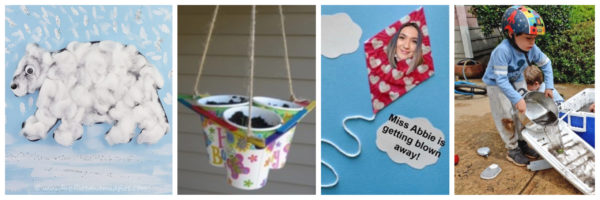
Activity Packets for Level 1 Words
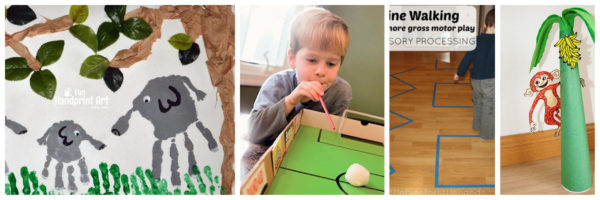 Activity Packets for Level 2 Words
Activity Packets for Level 2 Words
Strategy of the Month: SHARED READING
Shared reading is an evidence-based instructional approach whereby the adult helps to guide the emergent reader to interact with a book by leading with a comment, asking a question, or responding to what the student may say; providing wait time in order to allow for processing and opportunities for interaction (Notari-Syverson, Maddox and Cole, 1999). In this approach, the adult reads with the student, not to the student. Shared reading can be conducted in 1:1 or in small or larger group dynamics.
Here, the adult follows the child’s lead and can provide modeling using the student’s AAC system to engage and interact with the book. Adults can help bridge the gaps by connecting the student’s comments, ideas, and experiences with the book. Book selection is vital in order to ensure a motivating and engaging activity for each individual student.
Jane Farrall Consulting- Shared Reading: Focus on Interaction courtesy of Jane Farrall Consulting
Please find the following additional resources on Shared Reading below. These resources will be helpful for individual learning and/or for team training.
Resources:
- Literacy Instruction for Students with Significant Disabilities Courtesy of Edmonton Regional Learning Consortium
- Shared Reading with AAC Users (VIDEO)
- Shared Reading: Focus on Interaction courtesy of Jane Farrall Consulting
- Integrating comprehensive literacy instruction Courtesy of AssistiveWare
- Tar Heel Shared Reader, (developed by a team at the Center for Literacy and Disability Studies at University of North Carolina at Chapel Hill) provides electronic shared reading resources with PCS symbol supports, (to help students engage in shared reading activities). Additionally, free professional development modules are available for training on using Tar Heel Reader teaching at this link: Quick Start Guide to Tar Heel Shared Reader
- Find a book on Tar Heel Shared Reader (Select from numerous books to engage your emerging readers).
- Shared Reading training modules by Dynamic Learning Maps, These self-directed training(s) are available to complete at your own pace.
- Shared Reading (17 minute training) by Dynamic Learning Maps
DATA COLLECTION & ACCOUNTABILITY FORMS
Taking data to measure performance and keeping track of our own modeling behavior are two things we can do to strengthen our AAC teaching. Here are some forms that you can use to support those efforts.
This posting is dedicated to all of you SLP’s, parents, educators, and therapists who are making a difference every day!
About the School Year of Core Vocabulary Series Authors
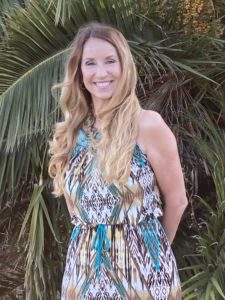 Michaela Sullivan is an SLP who specializes in the fields of AAC and AT. She currently works within the San Francisco Unified School District on the AAC Support Team where she supervises graduate students, works in a transition program, and on special projects. Ms. Sullivan also has a private practice. She has been a presenter in the field of SLP and AAC at state and national conventions. She serves as a board member and volunteer for the Nika Project, providing services, supports, resources, training, and repurposed equipment for individuals with complex communication needs both locally and internationally.
Michaela Sullivan is an SLP who specializes in the fields of AAC and AT. She currently works within the San Francisco Unified School District on the AAC Support Team where she supervises graduate students, works in a transition program, and on special projects. Ms. Sullivan also has a private practice. She has been a presenter in the field of SLP and AAC at state and national conventions. She serves as a board member and volunteer for the Nika Project, providing services, supports, resources, training, and repurposed equipment for individuals with complex communication needs both locally and internationally.
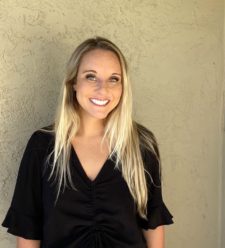 Alisa Lego is a second-year graduate student and candidate for Master of Science in Speech, Language and Hearing Sciences at San Francisco State University. Alisa is specializing in AAC through San Francisco State University’s federally funded Project Building Bridges. Alisa is also a candidate for the Autism Spectrum Graduate Certificate. Through Project Building Bridges, she has joined the Nika project and is providing resources for individuals with complex communication needs both locally and across the globe. You can follow Alisa on Instagram at @newfriendscollective.
Alisa Lego is a second-year graduate student and candidate for Master of Science in Speech, Language and Hearing Sciences at San Francisco State University. Alisa is specializing in AAC through San Francisco State University’s federally funded Project Building Bridges. Alisa is also a candidate for the Autism Spectrum Graduate Certificate. Through Project Building Bridges, she has joined the Nika project and is providing resources for individuals with complex communication needs both locally and across the globe. You can follow Alisa on Instagram at @newfriendscollective.
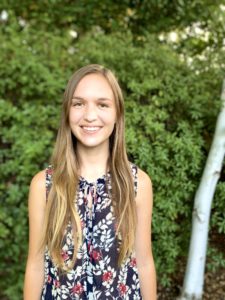 Beth Lytle is a second-year graduate student and candidate for Master of Science in Speech, Language and Hearing Sciences at San Francisco State University. Beth is specializing in AAC through San Francisco State University’s federally funded Project Building Bridges. Through Project Building Bridges, she has joined the Nika project and is providing resources for individuals with complex communication needs both locally and across the globe.
Beth Lytle is a second-year graduate student and candidate for Master of Science in Speech, Language and Hearing Sciences at San Francisco State University. Beth is specializing in AAC through San Francisco State University’s federally funded Project Building Bridges. Through Project Building Bridges, she has joined the Nika project and is providing resources for individuals with complex communication needs both locally and across the globe.
:::::::::::::::::::::::::::::::::::::::::::::::::::::::::::::::::::::::::::::::::::::::::::::::::::::::::::
You can find posts for previous months in the School Year of Core Vocabulary Words below.
Filed under: Featured Posts, PrAACtical Thinking
Tagged With: core vocabulary
This post was written by Carole Zangari


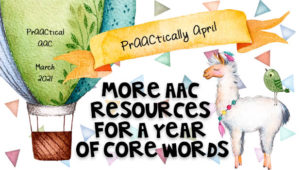

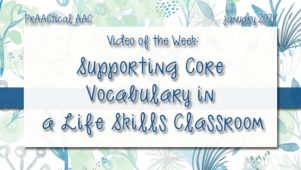
2 Comments
Hi, Carole.
I just tried to download all of the activity packets for the 9th month for the first level, and it appears that weeks 1, 2, and 3 are linked to the activities for Level 2 rather than level 1. If you could change that, it would be very helpful!
Thank you so much for all you do for the AAC community! You are amazing!!
Take care.
Janet, thanks for letting me know. It’s all fixed and should be working properly now. Sorry for the inconvenience!